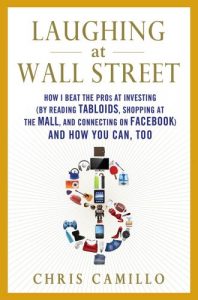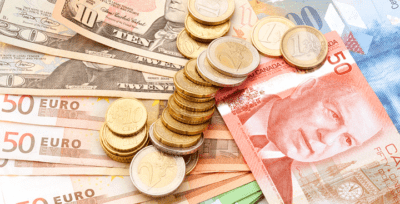ADMIN
No description.Please update your profile.
Contents
In addition, the Dogs have high concentrations of sectors that have done relatively poorly so far in 2019. With two major pharmaceutical stocks among their ranks, the Dogs have had to deal with sluggish performance among top pharma companies. Similarly, energy stocks forex covered call strategy haven’t done particularly well this year, yet both of the Dow’s integrated oil majors were among the Dogs of the Dow for the year. Meanwhile, strong performance from retail has been highly underrepresented in the list of Dogs for 2019, further holding it back.
Pfizer closed at $33.92 on April 28, up 4.4% year-to-date and is 13.2% above its postelection low of $29.96 set on Nov. 8. The stock ended 2016 with a dividend yield of 3.94%, and it’s now 3.83%. Coca Cola closed at $43.15 on April 28, up 4.1% year-to-date. The stock is 8.2% above its postelection low of $39.88 set on Dec. 12.
Depending on how the market performs, some stocks may remain a dog for a few years. One example is Verizon, which has appeared on the Dogs of the Dow each year since 2010. The company has only gained an average of 9.5% per year over that span. The Dogs of the Dow was popularized in 1991 when Michael B. O’Higgins published his book, «Beating the Dow.» The term «dog» refers to stocks that have fallen out of favor. The strategy is to focus on the dogs, with the idea being that they’re near the bottom of their business cycles and are poised to bounce back. To put this in context, earnings for 2020 were $0.52, down from $4.32 the prior year.
Chevron closed at $113.88 on March 1, down 3.2% year-to-date. The stock ended 2016 with a dividend yield of 3.67% and it’s now 3.79%, the second cheapest Dow stock, up from fourth place at the end of 2016. Cisco Systems closed at $34.44 on March 1, up 14% year-to-date.
The company has been restructuring since 2017, casting off brands and products at breakneck speed. And it’s not done yet, announcing in its third-quarter report it “expects to offer a portfolio of approximately 200 master brands, an approximate 50% reduction from the current number . International Business Machines had a close of $160.29 on April 28, down 3.4% year-to-date. The stock is in correction territory, 12.3% below its postelection high of $182.79 set on Feb. 16.
The stock market is climbing, but this popular strategy is going nowhere. Get stock recommendations, portfolio guidance, and more from The Motley Fool’s premium services. The Motley Fool recommends Chevron, Cisco Systems, Coca-Cola, and Verizon Communications. Which high dividend paying stocks would make the cut as one of the Dogs of the Dow today? If you would like to see how the highest dividend paying stocks of the Dogs of the Dow are doing, check out the official 2023 Dogs of the Dow, and track them with our Dogs of the Dow performance tables. Depending on the variation of the strategy, performance has been mixed in the last few years.
However, 2017 is a remarkably stable year for the Dogs, with just two new entrants joining eight carryover picks from 2016. To see the Dogs of the Dow and Small Dogs of the Dow live during the trading day see Dogs of the Dow Today and Small Dogs of the Dow Today. To view the Dow Jones Industrial Average live try Dow Jones Today. To see how the Dow is doing after hours and premarket, try Dow Jones Futures. When comparing the Dogs of the Dow to the S&P 500 since 2010, the performance is also very similar with the Dogs returning an average of 13.6% per year compared to 13.9% per year for the S&P 500.
With the year drawing to a close, it’s almost certain that the Dogs of the Dow won’t be able to match up to the performance of the entire benchmark. Boeing closed at $184.83 on April 28, up 18.7% year-to-date and in bull market territory, 30.8% above its post-election low of $141.29 set on Nov. 8. The stock ended 2016 with a dividend yield of 3.65%, and it’s now 3.18%. The end of 2016 has brought a serious change for the markets and for investors. It turns out that Donald Trump’s infrastructure and pro-growth initiatives have created a serious demand for industrial, infrastructure, consumer and growth stocks. The rise in Treasury yields has been massive, and that has put some pressure on some of the more defensive dividend stocks that have been a safe haven for investors over the past six years.
The stock ended 2016 with a dividend yield of 3.55%, and it’s now 3.74%. The stock ended 2016 with a dividend yield of 4.35% and it’s 4.69% now, still the cheapest of all Dow components. Investors looking to buy Coca Cola should do so on weakness to my monthly value level of $38.91. Investors looking to reduce positions should sell strength to $47.40, which is my quarterly risky level. The stock ended 2016 with a dividend yield of 3.65%, and it’s now 3.20%, which pushed the stock from the fifth cheapest to ninth place among the Dow 30.

General Electric remains a topic of intense debate, with some seeing huge potential for a recovery from the venerable industrial giant. Others fear that new management will have trouble refocusing the colossus in new directions after ill-timed forays into the power and energy segments have proved costly. Procter & Gamble’s addition came even though the stock did reasonably well, with its share price climbing 8% in 2017. A year of difficult conditions in the consumer-retail environment weighed on the household-products giant, and strong competition, both domestically and internationally, held P&G back from further gains. In addition, a high-profile proxy fight with activist investor Nelson Peltz ended with a very narrow victory for the company, highlighting the level of discontent among investors in P&G. Is down 7% on the year, compared to positive returns of as much as 25% for tech peers elsewhere.
Unlike the Dogs of the Dow strategy, it significantly outperforms. In the world of investing, «alpha» is a word used to describe outperformance. A popular screen many investors use to search for outperformance candidates is called, «The Dogs of the Dow.» The grand result, unveiled in 1876, became known as the Doberman Pinscher—now considered one of the smartest, most athletic dogs on the planet.

«While they have produced similar returns over that 12-year period, some individual years have seen quite a divergence in performance,» says Johnson. «In 2020, for example, the DJIA gained 7.2% while the Dogs suffered a loss of 12.7%. The Dogs also underperformed in 2021, when the Dogs generated a return of 16.3% versus 20.8% for the DJIA,» he continued. «The challenge with this methodology is it focuses on only 10 companies, which is not a very diverse portfolio,» says Joseph M. Favorito CFP® professional and managing partner at Landmark keys to heaven’s economy Wealth Management. «It doesn’t take into account the tax impact of possibly turning over your entire portfolio should you attempt this in a non-retirement account without a tax shelter,» Favorito says. «The underlying premise behind the strategy is mean reversion,» says Robert R. Johnson, professor of finance at the Heider College of Business at Creighton University. «The is based on the theory that stocks can be over or undervalued, but over the long run those that are undervalued will ‘revert to the mean,'» says Johnson.
The Dogs of the Dow are 10 stocks chosen from the 30 companies in the Dow Jones Industrials. The way this simple strategy works is that at the beginning of the year, dividend investors looked forex rebate at all 30 Dow stocks and picked the 10 that had the highest dividend yields. They then invested an equal amount of money in all 10 stocks, with the intent to hold them throughout 2017.
That leads to changes in the Dogs from year to year, as strong-performing stocks move out of the group and weaker performers cycle in. In 2017, great returns from Dow leaders Boeing and Caterpillar led to their graduating out of the Dogs, with Procter & Gamble and General Electric replacing them. All 30 components of the Dow pay dividends, and the blue chip companies that make up the average are among the biggest and most important businesses in the global economy. Verizon closed at $45.91 on April 28, down 14% year-to-date, and in correction territory, 16.3% below its postelection high of $54.83 set on Jan. 5. The stock ended 2016 with a dividend yield of 4.35% and it’s 5.11% now, by far the cheapest of all Dow components.
You can also easily track the performance of this year’s Dogs of the Dow with our Daily Year-to-Date Performance Tables. Yet it’s interesting to see that 2017 looked a lot like 2019 in terms of how the overall market did. A 25% rise for the Dow proved impossible for the Dogs to keep up with, and Dogs investors had to settle for a 19% gain instead.
For this reason, Verizon has been a dog, in the technical meaning of the word, for at least a decade. But Verizon has quietly delivered a total average annual return of nearly 12% to investors over the past decade, though the stock appreciation portion has been lumpy. Growth is likely tepid as the telecoms are largely relegated to stealing share from each other, but the dividend is nothing to sneeze at, and likely safe too. When stock market indexes do extremely well, it can be tough for more conservative investing strategies to keep up. 2019 has been a tough year for the Dogs of the Dow strategy, which seeks to focus on top dividend stocks within the Dow Jones Industrials.
Beware that the percent gain from the all-time intraday high of 21,169.11 to the 22,148 risky level is only 4.6%. I still have a quarterly value level of 18,300, which expires at the end of March. Stocks see their yields change over the course of a year, in part because of share-price moves and in part because of changes to dividend payments.
If you’re ready to find an advisor who can help you achieve your financial goals, get started now. My market call is that the Dow can trade above 22,000 by the end of June, then there is risk to my annual value level of 15,111. Coming into this year, the Dogs of the Dow strategy had outperformed the broader average in six years out of the most recent seven.
Moreover, the Dogs paid higher dividends that gave the strategy another percentage point of outperformance compared to the overall Dow. Leaving the Dogs this year are Wal-Mart and Procter & Gamble. Interestingly, neither of the two consumer giants had particularly good years, with both stocks underperforming the broader Dow in 2016. However, a combination of factors resulted in their falling to the No. 11 and 12 spots on the Dow yield list.
No description.Please update your profile.
LEAVE A REPLY